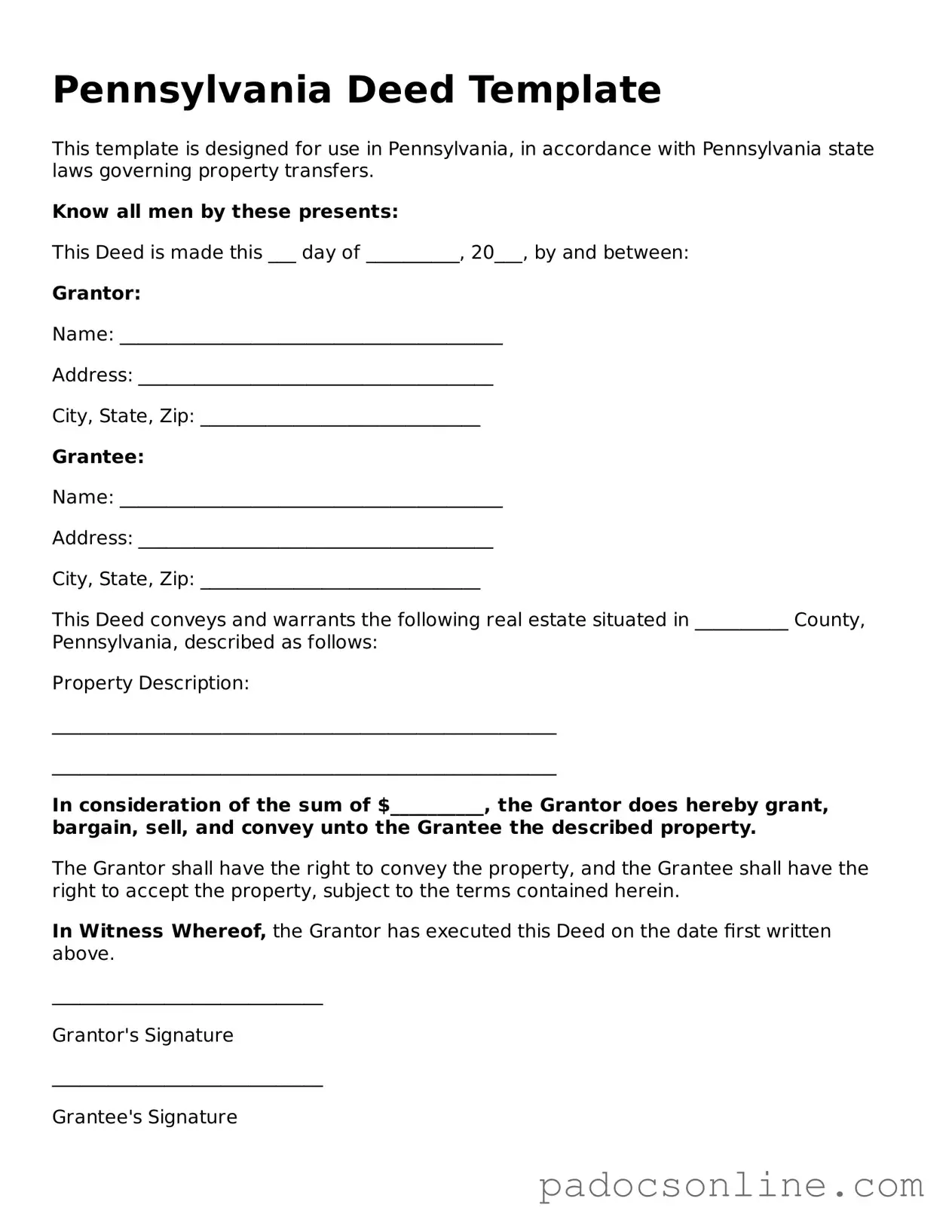Filling out a Pennsylvania Deed form can seem straightforward, but many people make common mistakes that can lead to complications down the line. One frequent error is failing to include the correct legal description of the property. This description is essential as it identifies the exact boundaries of the property being transferred. Without it, the deed may be considered invalid, causing confusion or disputes in the future.
Another mistake involves incorrect names or spellings. It is crucial to ensure that the names of all parties involved are spelled correctly and match their legal identification. If there are discrepancies, it could lead to challenges in the transfer process. Always double-check names against official documents to avoid this pitfall.
Many people also overlook the importance of including the date of the transfer. While it might seem minor, the date establishes when the ownership officially changes hands. Omitting this information can create legal ambiguities that complicate matters later on.
Additionally, some individuals fail to have the deed properly notarized. In Pennsylvania, a deed must be signed in front of a notary public to be legally binding. Without notarization, the deed may not be recognized by the county or in legal proceedings, leaving the transaction in limbo.
Another common error is neglecting to record the deed with the county. After completing the deed, it must be filed with the appropriate county office to ensure public record. Failing to do so can result in challenges to ownership and may affect the ability to sell or refinance the property in the future.
Lastly, people often forget to review the deed thoroughly before submission. Taking the time to carefully read through the entire document can help catch any mistakes or omissions. A thorough review can save time, money, and stress in the long run, ensuring that the transfer of property goes smoothly.
